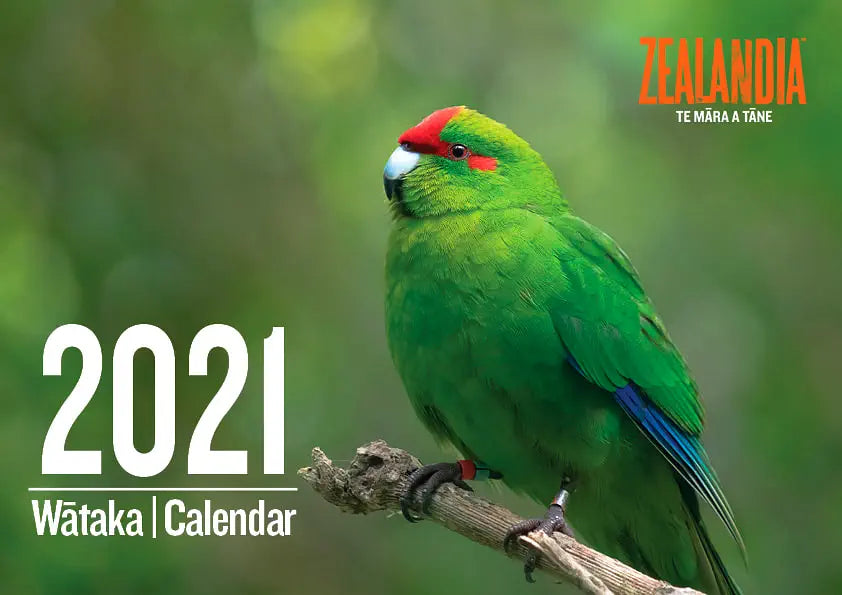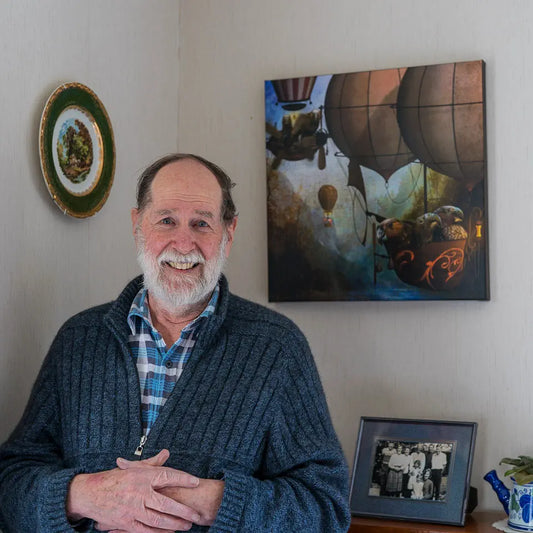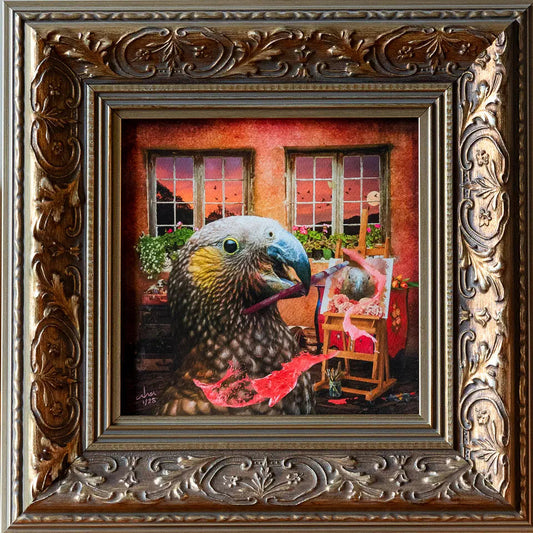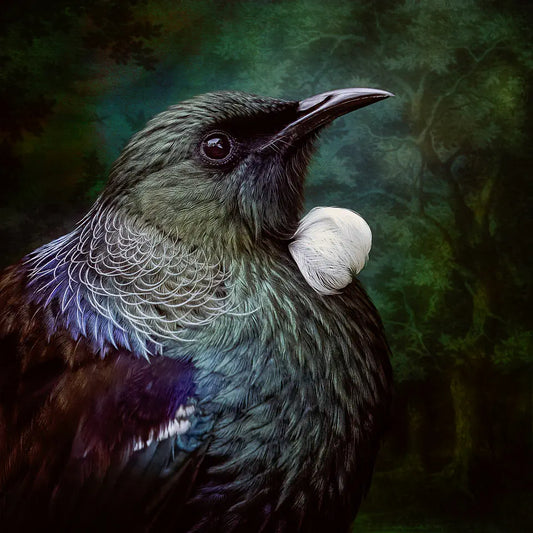
Our annual labour of love
Share
My favourite project for Zealandia EcoSanctuary is creating the annual fund-raising calendar! And it takes around 18 months to create if you account for the effort required to obtain a seasonal range of photos. Many of us aim to get that calendar-worthy shot on every visit to Zealandia, and we visit year-round, often weekly.
Planning starts in December, and sometime in the New Year a call goes out to the volunteer Sanctuary Storyteller photographers and to regulars on the ZEALANDIA Visitor Art & Photography Facebook page to start submitting their photos. We aim to include at least three photos per month, with each month having a theme. It's a 13-month calendar, because it's created from folded A3 paper (to make an A4 calendar). This gives 4 pages for every piece of paper. A 12-month calendar plus cover only fills 26 of 28 pages.
Around March, the selections are made and photos edited and approved by the contributing photographers and staff. This year, preparations coincided with lock-down, giving me a most-welcome distraction.
The coveted spot is of course the cover – that image needs to be compelling, have some negative space for branding, and be recognizable from a distance. Congratulations to Jason Plaisted for his wonderful kākāriki photo that graces the 2021 cover.
Once the photos are set, over autumn, the Storyteller writers conjure up inspiring stories to match the theme and images. Some keen contributors aim for the complete sweep with a set of themed photos and a matching story. But most months are a mix of many contributors.
As we head into winter, the fact-checkers and researchers dig in and confirm all the species are identified correctly, that the dates and moon-phases are correct, the Te Reo Māori is correct (including macrons), as are the holidays and observations. The pedants among us relish this task, and many lively discussions can ensue. I'm sure some of you are also pedants and are interested in some of the behind-the-scenes decisions (if not, skim down to the end to find out how to get hold of a calendar!).
I always fear the dates will somehow be wrong, but I use this amazing plug-in for InDesign (Calendar Wizard) that is a pig to use, but when you conquer it, it automatically generates all the spreads. It's a life- and time-saver.
We set the moon phase as it is in Wellington – anywhere else in the country (or world) can be off by a day as the phase often changes in the middle of the night. There is often confusion as one of the definitive guides online has the correct phases, but uses the wrong Northern Hemisphere icons (yes, the moon is upside down in the Southern Hemisphere – a fun fact that has confused many of my Northern Hemisphere friends).
Scientific names can be quite fluid for NZ species, with researchers actively updating taxonomies, but with scientific consensus and adoption of new names taking some time. For instance, you may have noticed that our gecko names have transitioned back and forth over recent years, and it's still not settled. Te Reo names are also fluid as old knowledge is reclaimed by local iwi, or new names are needed.
Of great debate is whether transliterations for months and other European concepts should be used or maramataka months (from the Māori lunar calendar, which is based on moon phases). These decisions and recommendations are made with such care and much consultation. In recent years we have decided on the transliterations. I would love to someday help with a maramataka calendar too.
Some people wonder why we don't include specific observations and holidays. We strive to include many conservation-related observances, but the sponsoring organizations often don't advertise their dates (or haven't decided on them) for the coming year in time to include in the calendar (I won’t name and shame). We also don't tend to include religious holidays unless they're an official public holiday.
Not including the Matariki period (the Māori New Year) seems like an oversight to many, and we do hope to include it next year. But there are many variations across different iwi in how the period is defined. This makes a lot of sense when you consider it's all about observational astronomy: the appearance of the constellation Matariki on the horizon. And this of course depends on where you are in the country and barriers like hills. Some iwi use other constellations. It is a fascinating subject and there are some amazing Māori astronomers working on it. With talk of Matariki becoming an official public holiday, it will be interesting to see how consensus is reached because the aim is to have one date for the entire country (but which will at least vary each year), so by definition, some of what the Matariki period means will be lost to convenience.
Back to the Zealandia calendar – once the dust has settled and the facts established the best we can, it's then down to multiple rounds of proofing and sign-off from every part of the organization. We strive for no errors, but is that ever possible? By the end of the process, once the calendar comes off the production line, I'm too afraid to look! People tell me that it’s absolutely gorgeous, so I'm going to trust their judgment…
If you're keen to participate, do join the Facebook group and start working on your photography. You're more likely to be successful if you've taken a fabulous photo featuring a subject we haven't previously had in the calendar (e.g., kākā, tūī, kākāriki, and takahē have had more than enough exposure). We also love photos that show wildlife interacting with its environment or showing an interesting behaviour.
In addition, do join my Art of Birding Wildlife and Nature photography challenge. Many of the successful contributors are doing the challenge, which is designed to upskill photographers for wildlife advocacy, and with outcomes like the calendar in mind.
If you want to lay your hands on a calendar for yourself, your friends, and your family, pick them up at the Visitor Centre.
Finally, such huge thanks to the contributors for 2021:
Photography: Brendon Doran, Andrew Hawke, Loralee Hyde, Judi Lapsley Miller, Bianca Maddox, Amanda Main, Janice McKenna, Linton Miller, Jason Plaisted, Karen Rankin, Alison Valentine, Rory Wilsher.
Stories: Leon Berard, Vanya Bootham, Rosemary Cole, Loralee Hyde, Judi Lapsley Miller, Katherine Miller, Louise Slocombe.
Design: Judi Lapsley Miller.
Research & editing: Vanya Bootham, Libby Clark, Rosemary Cole, Chris Gee, Loralee Hyde, Judi Lapsley Miller, Linton Miller, Louise Slocombe, Rory Wilsher.































